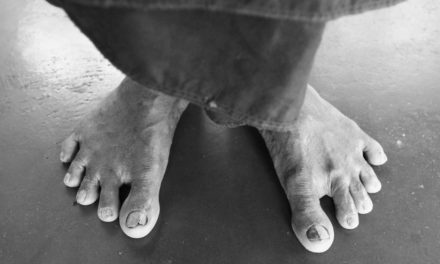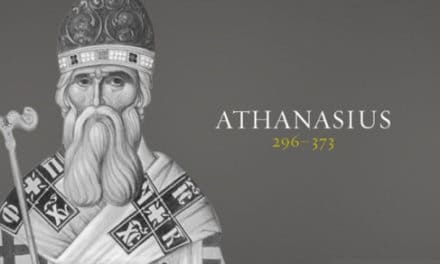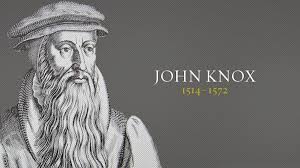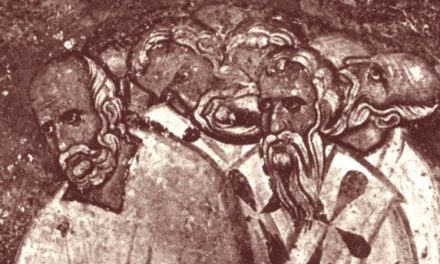This week’s episode is titled, “Patrick”
Last week’s episode was a brief review of Christianity’s arrival in Britain. We saw how the Anglo-Saxons pressed in from the east coast where they’d been confined by what remained of the Roman army. But when the Roman’s pulled out in 410, the Saxons quickly moved in to take their place, confining the Romano-British Christians to the western region of the Island. It was from that shrinking enclave of faith that a spark of faith leapt the Irish Sea to land in the dry tinder of Celtic Ireland. That spark’s name was Patrick.
While there’s much legend surrounding Patrick’s life, there’s scant hard historical evidence for the details of his story. We have little idea when or where he was born, where he lived & worked, when & where he died, & other important specifics. What we do have are incidental clues & his own records, vague as they are.
The record of Christianity in Ireland prior to Patrick is sketchy. A bishop named Palladius was appointed by Pope Celestine to the island, but he didn’t stay long. He left the same year Patrick arrived.
Patrick was born into an affluent & religious home. His father was a deacon; his grandfather a priest. The family was likely of the Romano-British nobility & owned minor lands along the shores of western Britain. Several locations claim to be Patrick’s ancestral home. At the age of 16, he was captured by Irish slavers who regularly raided Britain’s coast. He was taken back to Ireland & sold into captivity.
Patrick recounts little of his 6 yrs as a slave except to say he was a shepherd or swine-herd who spent long periods tending his charges. Being a slave, he endured long periods of hunger, thirst & isolation. This trial moved him to seek God in earnest. The faith of his parents became his own.
Years later, in writing what is known as his Confessio, Patrick said he believed his slavery was discipline for spiritual apathy. Not only did he attribute his own slavery as the chastening of the Lord, he said thousands of fellow Britons also suffered for the same reason. He came to see the discipline as God’s grace because it led him to God. He wrote –
More and more, the love of God and the fear of Him grew in me, and my faith was increased and my spirit enlivened. So much that I prayed up to a hundred times in the day, and almost as often at night. I even remained in the wood and on the mountain to pray. And—come hail, rain, or snow—I was up before dawn to pray, and I sensed no evil nor spiritual laziness within.
At 22, Patrick said he heard a supernatural Voice calling him to fast in preparation for returning home. Not long after, the Voice spoke again: ‘Behold! Your ship is prepared.’ The problem was, Patrick was 200 miles from the sea. Confident he followed the direction of God, he struck out for the coast. When he arrived & informed the captain he was supposed to board, the captain recognized him as a runaway slave and refused. Patrick realized now his situation was precarious and looked for a place to hide. Seeing a nearby hut he began to make his way there when one of the crew shouted at him to hurry up and board. It seems the crew was short-handed & thought to use Patrick as extra a novice seaman, paying for his fare by the hard work of a lowly deck-hand.
The ship set sail & 3 days later landed. Where is a bit of a mystery as Patrick is vague at this point. The best guess was northern Gaul. He says once they landed the crew wandered in a kind of wilderness for nearly a month. We do know that between 407 & 410, the Goths & Vandals ran amok across this region. Things grew desperate and the captain began to berate Patrick, mocking his trust in an all-powerful, all-loving God. Where was all that power and love now that they were in danger of starving to death? Patrick wasn’t intimidated by the challenge. As we’ll see, this kind of opportunity called forth from Patrick an even more determined faith. He told the captain, “Nothing is impossible for God. Turn to Him and He will send us food for our journey.” In desperation the crew obeyed. And as they prayed, a herd of pigs suddenly appeared. The sailors feasted & thanked Patrick, but they balked at embracing his faith in God.
There’s a break in Patrick’s account at this point so we’re not sure what happened next. A couple years pass and he’s back home in Britain with his family. They pleaded with him to stay but he’d learned enough of the will of God to know not to make such promises. A short time later he heard the call back to Ireland. He says he had a visionary dream in which an Irishman invited him back to the land of his slavery. Patrick writes in the Confesso –
His name was Victoricius, and he carried countless letters, one of which he handed over to me. I read aloud where it began: ‘The Voice of the Irish’. And as I began to read these words, I seemed to hear the voice of the same men who lived beside the forest of Foclut, which lies near the Western sea where the sun sets. They seemed to shout aloud to me as with one and the same voice: ‘Holy boy, we beg you, come back and walk once more among us.’ I was utterly pierced to my heart’s core so that I could read no more.
Realizing God was calling him back to the Green Isle, Patrick began to prepare. He understood the call to evangelize the Irish but didn’t think himself properly equipped to do so. He sought training in the form of theological study & official ordination. Since both his father & grandfather had followed this course it seemed proper for him as well. There’s some confusion at this point on where Patrick went to get his education. One biographer sends him to Rome while others say he went to northern Gaul to study under Bishop Germanus.
How long Patrick spent in training is unknown but he was eventually ordained as a deacon. One notable event from this time that would later be important to his life was his confession of a youthful sin to a close friend. It was something Patrick had done about a year before the Irish raiders captured him. It troubled him ever after and moved him to confess to a friend there in Gaul. The friend told him he thought it not that important an issue to fret over and that it would not prohibit him from being used by God. The friend even assured Patrick he would one day be made a bishop. Though the sin is left unspecified to us, it would later come back to haunt him.
How Patrick evangelized Ireland is an important case study because it opens to us the mind of Christian missionaries during this period. It may also help us understand the troubling religious syncretism that infected the medieval church.
The native Celtic religion of Ireland when Patrick returned was dominated by a pagan priesthood called the Druids. What we know of this Celtic religion is sketchy at best. Julius Caesar is one of our main sources from his encounters with them in his conquests of Gaul and Britain. The Romans loathed and at times feared the Druids. This was due to their near complete control over their people, a control enforced by abject terror. That terror may very well have been put in place by their being empowered by demonic spirits. Human sacrifice was a regular feature of the druidic system and they were attributed with the power to work the miraculous, often in cruel fashion.
As I mentioned, there was some limited Christian presence on Ireland prior to Patrick’s arrival but the church had made little headway against the domination by the Druids. Patrick’s 6 year foray as a slave prepared him to know what he faced in the way of religious opposition when he returned. His plan was to confront the Druid’s on their own turf. He understood the only way to make headway among the people was by freeing them from their fear of the Druids. To do that, he’d need to look to the power of God to trump any demonstrations of demonic power the Druids conjured up.
This is where the stories of Patrick’s life become difficult to discern the truth of. His medieval biographers take this kernel of truth and spin elaborate yarns about his confrontations with the Druids. Most of those stories are probably fictional, while a few may be based on real events. The larger lesson for us to glean is Patrick’s method of evangelism.
The idea had grown among theologians that pagan religions weren’t so much anti-Christian as they were pre-Christian. Drawing from the Apostle Paul in Romans 1:20, they believed that “Since the creation of the world God’s invisible attributes were clearly seen, being understood by the things that are made.” Paul himself applied this in Athens when spoke to the philosophers on Mar’s Hill. Paul was disturbed by the many idols he encountered in Athens, yet used them to evangelize the Athenians. He said, ‘I see how ultra-religious you are in every way. I even found an altar with the inscription, ‘To an unknown god’. What you worship as unknown, I’m here to make known to you.” In Ecclesiastes, Solomon said God has written eternity on people’s hearts. Patrick & those who followed after looked for how to bring the Truth of Christ to the lost by using whatever elements of their native faith they could, converting it to the Truth of Christ.
Patrick and his contemporaries in no way approved of paganism or considered it an acceptable variant of the Gospel. They believed there were supernatural beings behind the idols & ideals of paganism; demons who kept people in spiritual bondage. They believed miracles and magic did occur. After all, Pharaoh’s magicians used supernatural power. But à & here’s the key to Patrick’s methodology à the God of Moses was more powerful, & used His power to bring good while demonic power served only to promote ruin.
So when Patrick arrived in Ireland and proclaimed the Gospel, the druids came out in opposition. Their hegemony over the Irish was imperiled. They thought nothing of moving swiftly to kill him. They were the law and could do what they wished. But: They found it harder than they thought. None of their plans or plots worked. It was as if a supernatural wall protected Patrick. He wrote of this time, “Daily I expect murder, fraud, or captivity. But I fear none of these things because of the promises of heaven. I have cast myself into the hands of God Almighty who rules everywhere.”
While trusting himself to the protection of God, he also took practical measures to gain allies among the Irish by building amiable relationships with them. These allies kept him informed of the various plots against him.
While Patrick does not himself record any specific confrontations with the druids, that’s the subject of many of his biographers. A turning point in Patrick’s mission came when an Irish chieftain named ‘Laoghaire’ came to faith. This chieftain had a group of powerful druids who advised him but who were unable to defeat Patrick in demonstrations of supernatural power. When a couple of those Druids fell ill, Laoghaire was convinced of the superiority of Patrick’s God and message and professed faith in Christ. As was common to that culture, with his conversion, the people of His clan also came to faith. Their alliance with other clans opened the door for Patrick to bring the Gospel to them as well and soon the entire region had converted.
This then was Patrick’s method of evangelism as he made his way across Ireland. He confronted the Druids head on, showing the superiority of God’s power, breaking their monopoly on the minds of the Irish first, then going after their hearts with the Grace of God in the Gospel of Christ.
Another turning point was the conversion of some of the Druids themselves.
Patrick was driven to bring the Gospel to Ireland because Hibernia, as Ireland was called, was considered the end of the World & Jesus had said the Gospel would be preached to the ends of the world, then the end would come. Patrick thought he was hastening Christ’s return. In his writings, he repeatedly mentions he was in ‘the last days’, and quoted Matthew 24:14. He wrote, “It has been fulfilled. Behold! We are witnesses to the fact that the Gospel has been preached out to beyond where anyone lives.’
Patrick wasn’t alone in this belief. Christians never gave up the idea Christ would return when all the nations heard about him; they just discovered more nations. About exactly a thousand years after Patrick, Columbus went to America not merely in a quest for fame and riches, but to hasten the 2nd Coming. His Book of Prophesies shows how he thought his discovery fitted into biblical predictions of the end times.
While the legend of Patrick’s use of a shamrock to explain the Trinity is interesting, there’s no historical evidence of it. It wouldn’t have been necessary because in the Celtic religion, the concept of a divine trinity was already in place. There’s also no evidence to support the story of Patrick driving all the snakes out of Ireland.
We’ve quoted the first of the two documents Patrick left us, his Confessio. The other was a letter he wrote to a British chieftain named Coroticus. Coroticus claimed to be a Christian but sent his soldiers on raids to Ireland. They’d taken many of Patrick’s converts as slaves. In one case, just a day after being baptizing, dozens of Patrick’s converts were brutally attacked by Coroticus’ raiders. Though they were still dressed in their baptismal garments, many were killed, the rest hauled off as slaves. Patrick was outraged and wrote an open letter to Coroticus which he circulated to many others. It excommunicated both Coroticus and his soldiers, barring them from Christian fellowship and Communion until they did penance and restored what they’d stolen.
Not long after Patrick was named bishop of the Irish church, that friend to whom he confessed his youthful sin, betrayed him. Though the man had earlier said what Patrick had done was no great error, he decided to brand it so by making it public and bringing shame on Patrick. Though we never do discover the nature of the thing, it was a scandal to church officials. Some called for Patrick’s immediate ouster as bishop. Misfortune is a magnet of ill-news and soon others were adding to the accusations against him. One man claimed Patrick had gone to Ireland merely to get rich, an odd charge when we considered the poverty that marked his life and the unlikely prospect before he went of the success of that ambition.
The charges were serious enough to require a church synod. They commissioned an investigation. A group went to Ireland to question Patrick. Though he never testified at the synod back in Britain, the turn-coat friend who’d betrayed him thought better of his betrayal and ended up defending him. The Confessio was Patrick’s reply to the charges against him.
While the official outcome of the synod is unknown, that Patrick was never censured or deposed as bishop suggests the charges were refuted.
Patrick was less concerned with planting churches as he was in making converts and was tireless in his journeys back & forth across the island. Following the pattern of the time, he considered the ascetic life of the monastery as the purest form of the Faith and encouraged his converts to be monks and nuns. This led to the building of dozens of monasteries and nunneries in Ireland. The rural nature of the island also encourage this form of the Church. Without major urban centers, large churches overseen by bishops were rare. So Irish Christianity was centered in communal monastic life.
Patrick died of natural causes on March 17th, 493. Today, he’s one of the most famous figures from the 5th C. Like so many others of the past who accomplished great things, we’d probably not even know of him were it not for the dynamic missions outreach that came from Ireland. Patrick, the patron saint of Ireland was British. And the Faith he transplanted across the Irish Sea eventually came back to Britain.
Many have noted how the Irish have a habit of leaving Ireland. The missionary monks were no exception. There were churches in Britain before Patrick’s day. His father and grandfather were church leaders. But the Anglo-Saxons had confined Christian Britain to a small sliver of the west. A century after Patrick, an Irish monk named Columba founded a monastery on the island of Iona, off the coast of Scotland. Though a small base, Iona was nevertheless responsible for a mighty wave of missionary outreach to Scotland & Britain.
With this vibrant base in Ireland & Britain, Celtic monks went to the Continent. They established bases of outreach in Germany, Switzerland & Italy. These in turn became centers of evangelization and scholarship. These Celtic monasteries maintained a fierce independence from Rome, though they held the same faith. The Roman popes tried to assert authority over them but for the most part Celtic Christianity resisted such control.
It was in these monasteries that much of the ancient wisdom of the Greeks & Romans was stored, laboriously copied, & assiduously studied, waiting for the day when it would re-emerge in what’s known as the Renaissance.
In his book How the Irish Saved Civilization, Thomas Cahill says this of Patrick –
The Irish gave Patrick more than a home—they gave him a role, a meaning to his life. For only this former slave had the right instincts to impart to the Irish a New Story, one that made new sense of all their old stories and brought them a peace they had never known before.




